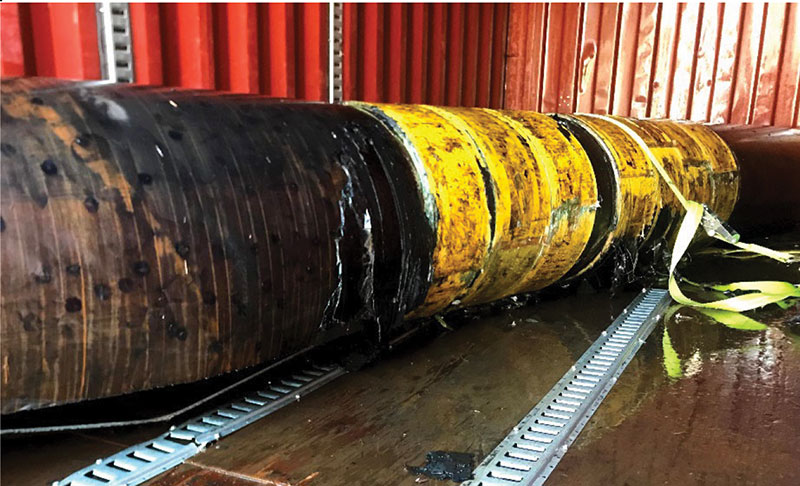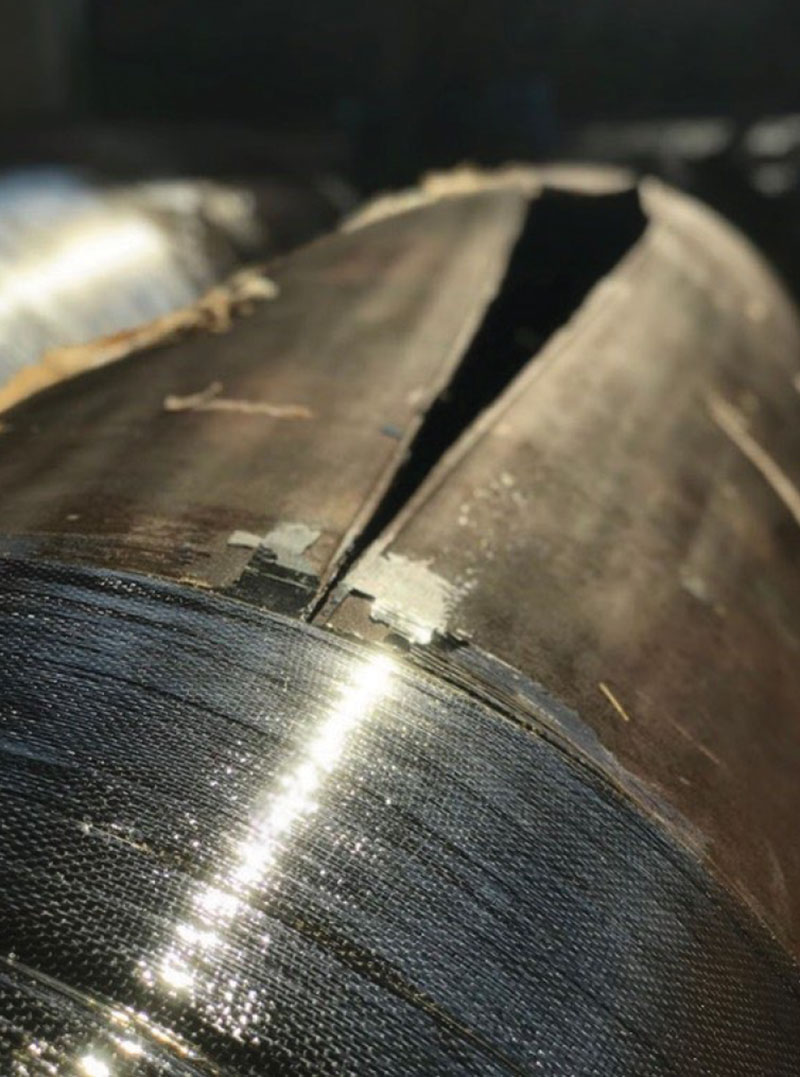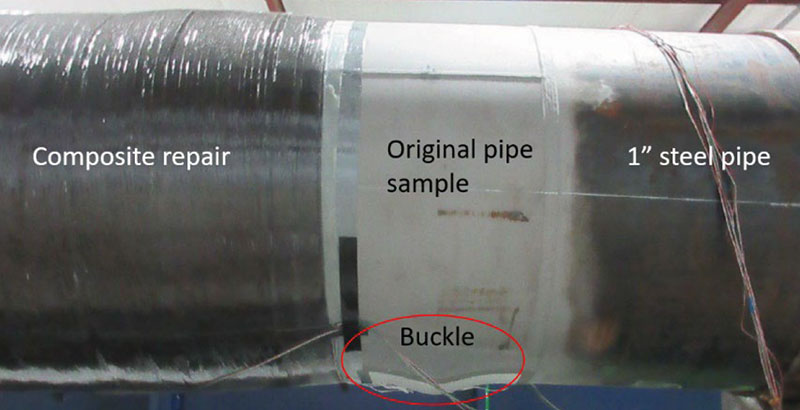July 2022, Vol. 249, No. 7
Features
Ongoing Journey of Composite Repairs
By Casey Whalen, Global Engineering Manager, Clock Spring NRI
Carbon steel has been used for over a century as the standard material for pipelines and piping systems. Throughout that time, countless new discoveries, techniques and improvements have been made and recorded – so much so that the new pipelines laid today share almost nothing with their ancestors beyond their cylindrical shape.
However, to those who are uninformed about carbon steel and pipe manufacturing, or integrity maintenance, a carbon steel pipe is just a carbon steel pipe. A vintage girth weld just means an old weld and, besides, welding is just welding, right? Of course not, but this is the view of those who are not actively surrounded by the impact of our perpetual progress forward.
With that in mind, let’s discuss a similar journey along a parallel track and look at the recent advances in composite repair materials and technologies on pipelines.
Simply put, a composite repair is a combination of resins and fabrics that are applied over a damaged pipe area to restore any lost strength and to help minimize or prevent future damage. Often, these resins consist of epoxy, polyurethane, or vinyl esters, but can contain more unique resins based on thermal or environmental needs.
Similarly, most composite repair systems use fiberglass for general repairs, carbon fiber for high-strength reinforcement or other types of custom fabrics based on unique needs. These combinations of fabric and resin are then applied over a damaged section of pipe usually suffering from wall loss or mechanical damage.
With the correct engineering, testing and application, composite repairs can bring many damaged pipes back into full service. Typical benefits of using a composite repair include being light weight, cost-effective, durable, safe and expediate to repair, just to name a few.
The first composite repair system created and used in pipeline repair was the Clock Spring system. The Clock Spring system is a precured composite with unidirectional fabric support oriented in the hoop direction. The Clock Spring system was thoroughly tested for wall loss features as well as dents.
Some more innovative uses have seen technology put on, in perhaps a slightly altered version, as casing spacers and crack arrestors for new construction. One of the more forward-thinking test programs that were run was with regard to the longevity of a Clock Spring.
Using a standard creep-rupture test scenario, Clock Spring samples were loaded and held until eventual failure occurred.
Using these test results alongside an engineering analysis on a per-defect basis, CSNRI demonstrated that under continuous use, this repair method can last more than 50 years in most conditions.
However, as the saying goes, trust but verify. CSNRI obtained an in-service Clock Spring on a section of pipe that was installed in 1995, which was removed recently from service intact.
With a 25-year-old sample on hand, end caps were welded on the 24-inch (609.6-mm-) spool and pressurized. With the worst defect identified on the pipe as a 12-inch- (304.8-mm) long, 63% deep defect, any significant weakening of the Clock Spring could result in a failure within the repair zone.
After several pressure increases and 5-minute holds, the pipe burst outside of the repair zone at 2,180 psi (150.3 bar), which is more than three times the maximum allowable operating pressure (MAOP) of this pipe. It’s probably safe to say, there are likely very few other repair systems with this type of real-world data to reference.
Use of composite repairs has become a commonly accepted repair technique for corrosion and dents, but this article isn’t about origins, it’s about advancements and changes.
One of the biggest changes that has occurred is the use of composite material, specifically CSNRI’s Atlas repair system, on longitudinal crack or crack-like features, including seam-weld anomalies.
Starting in 2015, the Atlas repair system has been involved in three unique crack Joint Industry Programs (JIPs) and nearly a dozen client-specific test programs.
With testing in burst and extensive cyclic fatigue testing (across hundreds of repair samples), the Atlas repair system is now successfully repairing defects previously thought unrepairable by composites only 10 years ago.
How is this possible? Atlas is a high-modulus, bidirectional, carbon fiber and epoxy system that is field-applied to ensure a tight fit around the pipe.
The secret in its success, though, belongs to the engineering that supports the product, not necessarily the product itself. By combining composite repair stress-sharing theory with fracture mechanics, CSNRI now can conservatively estimate the remaining life of a crack underneath the repair, allowing it to be called permanent under certain conditions.
Most of the testing performed to date has been on seam weld defects or linear indications in the body of the pipe; however, just this year additional testing is taking place to examine stress corrosion cracking (SCC) as well as girth weld reinforcement.
Improvements in the engineering capability behind composite repairs are not the only thing that is pushing the composite repair industry forward.
Sometimes, it takes thinking outside the box, or in this case, forces from outside the pipe. Another recent advancement made by CSNRI is the use of specialized fabric in protecting vintage girth welds from geological movements, or geohazard events.
For this repair need, CSNRI is using uniaxially aligned, high-modulus carbon fiber that, when wrapped circumferentially around the pipe, reinforces against axial and bending loads.
Combined with the previously mentioned Atlas repair system, this Atlas UA product addresses axial and bending loads, resists pipe kinking and drives failure to occur via buckling in the base body of the pipe rather than having a brittle girth weld failure resulting in a catastrophic release.
Testing of this system is ongoing to explore additional repair needs and to better refine the design approach, but several dozen field repairs have already been made using the latest testing and design methodology.
Most of the testing performed is done on large-diameter pipe subjected to a four-point bend test with a significant defect introduced into the girth weld.
In all cases, the pipe outside the repair zone sees significant strain and yields while the girth weld is kept to strain values typically far less than 0.25% due to the repair system. Moreover, this type of repair has already been shown useful in addressing similar concerns, such as wrinkle bends.
Other advancements have been achieved by making changes to the resin systems used. A notable example of this would be CSNRI’s A+ Wrap or A+ Max. Both systems use a water-activated polyurethane that comes pre-impregnated in a sealed pouch. This system requires no field saturation and can be installed relatively easily underwater or in other wet conditions, with no concern for performance loss.
The ThermoWrap family of products really highlights the diverse capability of composites as well. Using the same fabric and serving the same general purpose of leak containment, the ThermoWrap family contains four different products.
ThermoWrap itself provides an ambient cure resin with exceedingly good chemical resistance up to 200° F (93.3° C). ThermoWrap MT, or medium temperature, can cure at ambient conditions but excels on warmer lines up to 313° F (156° C).
ThermoWrap HT, or high temperature, can go even higher, up to 430° F (221° C), but does require heat to properly cure. The last one, ThermoWrap 500, can go up to 500° F (260° C). To achieve this high temperature though, the product is actually pre-impregnated and requires high temperatures to melt the resin before it can be applied. At higher temperatures it begins to cure.
All four systems excel at leak containment under an array of temperature conditions commonly found in process plants or refineries and enable multiyear solutions to keep the site running until a long-term solution can be put in place.
By continuously exploring and testing with new fabrics, new resins and new engineering methodologies, we are just scratching the surface for the capabilities of composite repair systems.
Composites truly are a durable, economic and highly customizable solution. With just a few examples discussed here, the diversity of composite solutions used in solving today’s integrity issues has already been demonstrated.
And with less than half a century of use, there are still significant advancements to be made before the limits of composite repair technologies are found. But we can already state, with confidence, that a composite repair is not “just” a composite repair, it can be so much more in the right hands.








Comments